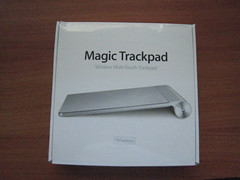Belkin released the
AV360 HDMI to Mini DisplayPort Converter earlier this month, as a solution to displaying HDMI video and audio on the 27-inch iMac.
Previously, the only device that did this was the comparably priced Kanex XD HDMI to Mini DisplayPort Converter.
There are a couple of major differences between the two units, which lean heavily in favor of the Belkin AV360:
- 1080p: The Belkin AV360 is capable of this resolution, while the Kanex XD is not. The Kanex XD maxes out at 720p. (though Kanex does claim that with a software fix, it too is capable of 1080p).
- Power Supply: The Belkin AV360 draws power off the USB 2.0 cable, while the Kanex XD requires a separate power adapter.
- Size: the Belkin AV360 is much larger than the Kanex XD, almost three times as long.
The Belkin AV360 includes a mini DisplayPort cable, and an USB 2.0 cable within the box, along with the converter. This is good, considering the only widely available mini DisplayPort cable available at the Apple Store generally retails for around $20. It is somewhat disappointing that Belkin does not include an HDMI cable to complete the kit.
The Kanex XD includes a mini DisplayPort cable, HDMI cable, along with a power adapter. USB 2.0 is not required, as an external power adapter is included.
One of the things that makes these two devices different from the older analog video converters is the lack of audio cables. This is because the mini DisplayPort and HDMI specifications allows audio to be broadcast over mini DisplayPort and HDMI cables.
Part of the reason why these devices are so expensive is due to the hardware required to the conversion -- a simple HDMI to mini DisplayPort cable won't work, as HDMI needs to pass along a HDCP handshake signal before it can be displayed on the iMac (or any of Apple's monitors) since it is not HDCP-complaint.
The setup for the two devices is nearly identical; simply plug the cables into the box and attaching the mini DisplayPort cable to the port on the iMac; switching between the box and the iMac is done by pressing Command+F2 to switch the inputs.
One of my experiments involved hooking up the iMac as an external display for my old MacBook Pro -- utilizing an DVI to HDMI cable, I used the MacBook Pro as the video in for the Belkin AV360 -- it worked like a charm, although the Belkin limits the display output onto the iMac; while a normal miniDisplay Port output can utilize the iMac's native 2560 x 1440 resolution, the Belkin was limited to 1080p as its maximum.
All that being said, $150 is a lot to pay for a converter box, even one that does do HDCP, which means that currently these are the only two options for utilizing the marvelous display on the 27-inch iMac. For those who are truly serious about the video quality, the Belkin is (for the moment), the better converter.



